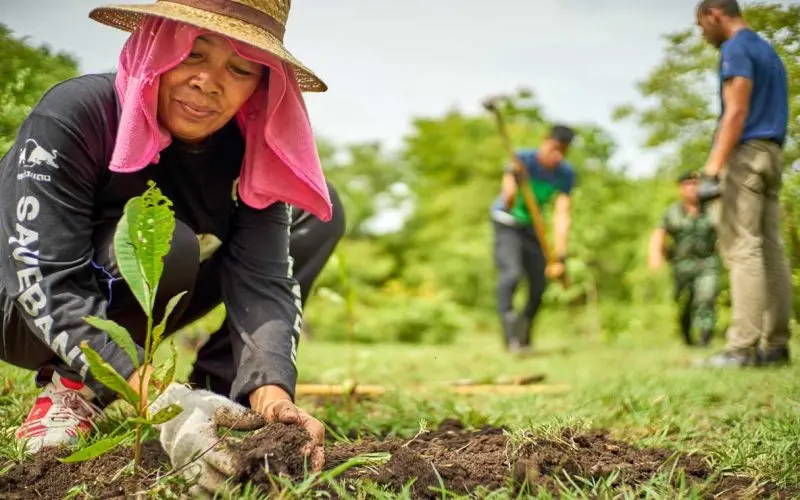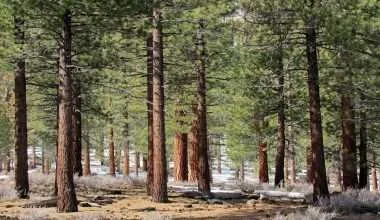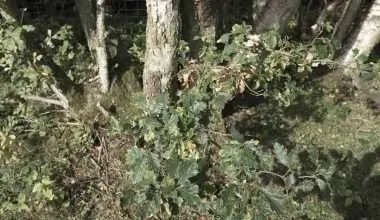Table of Contents Show
What is Afforestation?
Afforestation is the plantation of trees in areas devoid of plants and trees; it is practiced to create artificial forests that can cope with the demand of forest products.
This way we can prevent exhaustion of natural forests present in our world and replenish their resources. Afforestation has been a huge player when it comes to preserving natural forests highly susceptible to becoming extinct.
Many forests have already become extinct due to the inability to cope up with the demand of forest products and also due to the various threats being caused by climate change and global warming.
Afforestation has become a big player when it comes to fighting issues faced as a result of climate change. Afforestation absorbs the carbon emissions worldwide which are the major cause of the greenhouse effect.
It has also created arid lands and environments by converting areas which were initially barren and had virtually non-existent species into lands filled with productive resources and rich biodiversity of species.
Here we will look at some of the various causes and effects of afforestation, and how the benefits of afforestation are helping us in shaping out our future.
Causes of Afforestation
The earth’s resources are being pushed to the limit; they’re not given enough time to replenish themselves.
This makes something as sustainable as growing trees, into an unsustainable (limited) resource.
Humans are regularly cutting down trees in our natural forests to build household projects for citizens to meet the rising demands of growing population, and also to carry out agriculture to provide food for the population.
Furthermore, the industrial revolution and the lack of awareness of the population when it comes to tackling issues such as global warming and climate change has significantly harmed the natural forests of our planet.
These are some of the reasons of deforestation which lead to a dire need of major afforestation campaigns to tackle these issues.
Other specific causes will be discussed with the Effects below as it makes more sense that way.
Effects of Afforestation
In a way, you can think of them as benefits of Afforestation.
1. Fulfill Commercial demands of Forest products
This is where afforestation comes into play, it provides a helping hand to natural forests by protecting them and allowing them to grow and nurture without the threat of their resources being extracted for human purposes.
Afforestation can be used to help to meet the commercial demands of the earth, thereby providing aid to the planet’s naturally occurring forests.
Afforestation has led to the decline in deforestation of natural forests as people may now look to artificially planted forests to get their products.
2. Fights Global warming and Climate Change
Global warming and climate change have become a significant threat to the survival of our planets.
As years have gone by, more natural disasters (such as wildfires that happened in late December 2019 in Australia) and extinction of various species has led to countries taking action to tackle these issues upfront.
This is where afforestation comes in handy as it provides the conversion of arid and semi-arid lands into production forests so that they may combat climate change and global warming threats.
3. Regulates the Water Cycle
Afforestation brings to life new plants and trees which cool down the temperature of the region by providing water in the form of vapor which also leads to the development of torrential rainfall in that region.
That rainfall is highly crucial as it provides the wildlife living there with essential drinking water and also aids in the further growth of plants and trees in these forests.
The process of transpiration and water coming back in the form of torrential rainfall is also known as the water cycle and Afforestation helps regulate that cycle.
4. Reduces the greenhouse gas effect by acting as Carbon Sinks
Afforestation helps to reduce the carbon emissions of the planet by trapping carbon in the form of Carbon Dioxide and utilizing it in photosynthesis to produce oxygen which is released into the atmosphere so that they may be used by all living organisms including humans.
This trapping of carbon has led to a reduction in the greenhouse effect, which could ultimately curtail the effects of climate change.
Huge Afforestation lands, therefore, act as ‘carbon sinks’, absorbing any and all carbon dioxide that comes its way.
5. Development of New Ecosystems
There are various places on the earth, which are devoid of trees and contain an environment that is inhospitable for many species to live there and reproduce.
This prevents these areas to be inhabited by species making them essentially useless.
Afforestation allows the growth of vegetation in these areas which acts as a habitat for wildlife species and allows them to set up food chains and food webs within the ecosystem around it.
6. Gives New Homes to species affected by Habitat Loss and Destruction
Various species have found it difficult to live and start migrating to new areas as deforestation leads to habitat loss and destruction.
However, upon migration, they may find it difficult to adopt a new habitat or may come in contact with human populations which may lead to the decline of their populations and in some cases, extinction.
Fortunately, afforestation provides them a habitat that is identical to their previously lost habitat making it more feasible for them to live there as they don’t require any adaptation due to the similarity of their habitat.

This helps to provide support for wildlife which, without afforestation, may become homeless and have no place to breed, feed, and sleep. This will drive these animals to endangerment and possible extinction.
These new forests have allowed the wildlife to thrive and have once again raised the number of the species which had initially dropped down to alarming rates.
7. New Industry, New jobs/more employment opportunities

There are very high numbers of skilled populations unable to find stable job opportunities, leading to a decrease in the employment rate.
These people find it difficult to carry on with their lives and support their families due to them being constantly being put on the leash by the economy of the world.
As countries have started taking steps to start afforestation, more job opportunities have become available to these people currently unemployed.
The timber and logging industry is the one which requires the most amount of labor and they are willing to pay good wages to carry out work in the forests planted through afforestation.
This has allowed unemployed people to start living a better sustainable life and provide support to their families.
8. Boosts Local Economy
Local communities that are living nearby these artificial forests can benefit from this the most, as the products from these forests require processing so that they may meet the demands of their consumers.
The cottage industry can also be promoted through afforestation as more tourists will come to see these sites and will require places to rest or spend the night, thus providing income to cottage-owners and boost the economy of the local area.
You can contribute to our cause of Afforestation as well!






